The Annapurna Circuit is no doubt one of the most famous treks in the Himalayas. Introduced more than fifty years ago to trekkers visiting Nepal for the first time, the Annapurna Circuit has grown to be one of the best hikes in the world. The circuit goes around a whole section of the Nepal Himalayas, passing through every kind of terrain and landscape.
During the trek, one encounters a variety of communities, cultures, landscapes, terrain, climatic conditions, and ecosystems. These rich and varied experiences are what make the Annapurna Circuit special and a one-of-a-kind walking adventure.
However, in recent years due to the building of roads, most of the original foot trails along the circuit have merged with the rough jeep track. While this has disappointed many of the passionate trekkers who loved the classic foot trail, however, these roads have made life easier for the locals and the circuit more accessible and flexible for the trekking community. Now, one can opt to complete the entire Annapurna Circuit or walk only a part of it, depending on one's choice.
Many new trekking routes have been opened for trekkers in the past few years, but Annapurna Circuit, along with the Everest Base Camp trek, remains a clear favorite among trekkers visiting Nepal. If you are pondering whether to choose Annapurna Circuit or another high-altitude trek, here we give you the 10 Best Reasons to Choose Annapurna Circuit Trek.
Amazing Diversity
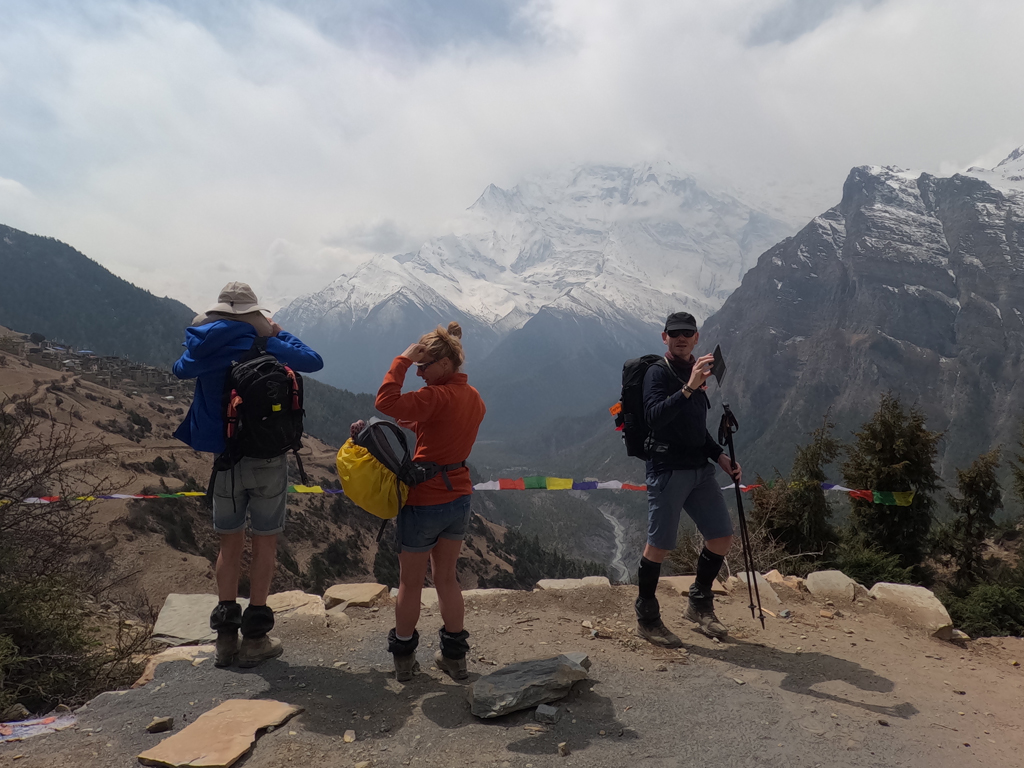
No other trek in Nepal offers as much diversity and variety as the Annapurna Circuit Trekking. Be it diversity in culture, landscape, terrain, or ecology, the Annapurna Circuit ticks all the boxes. The trek takes you from the lush sub-tropical forests to alpine valleys and icy passes. You walk across fertile river valleys, rice paddies, and semi-arid deserts in a matter of days. You encounter people from various communities and different faiths. The Annapurna Circuit also goes through the Annapurna Conservation Area, which is a storehouse of rare Himalayan flora and fauna.
Rich Cultural Experience
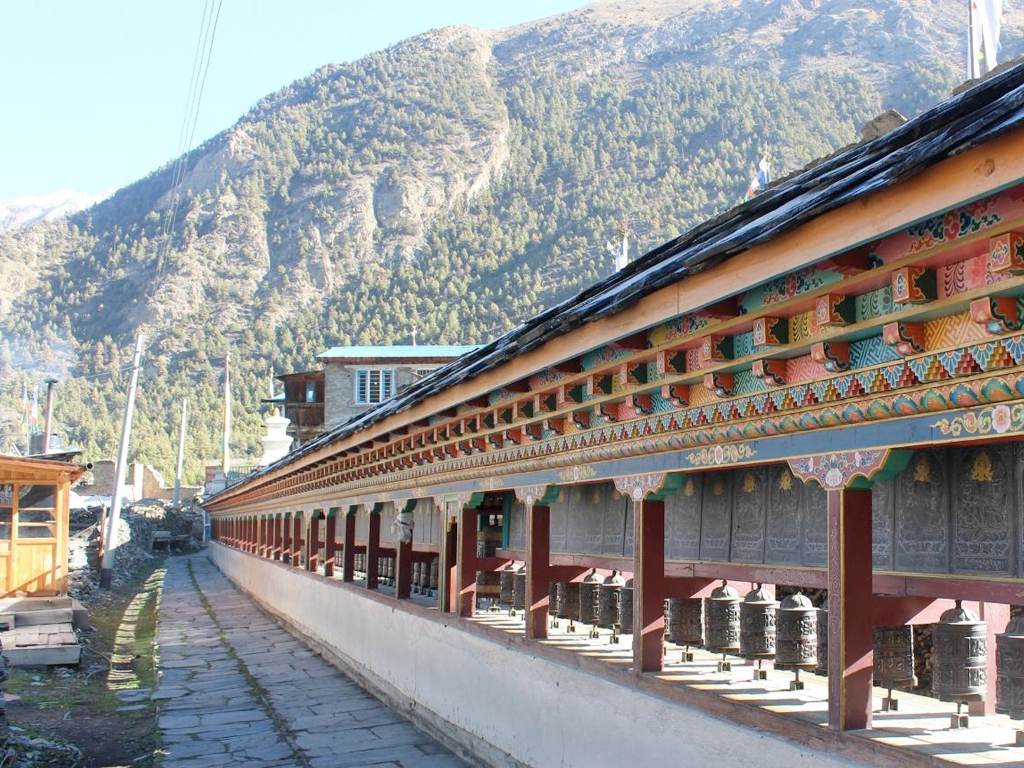
Another good reason to do The Annapurna Circuit is that it encompasses villages of different communities. In the lower reaches, you will walk through villages of the Gurung, Magar, and Chettri communities, which follow Hinduism and animism.
In the arid semi-desert area, you will come across villages of the Mananges and Thakkalis. Mananges trace their origins to Tibet and are culturally closer to Tibetans than to Hindu Nepalese. The remote desert valleys also have Bon practitioners. Bon is an animistic religion that predates Buddhism. Most of the people living in the Trans Himalayan region of Nepal and Tibet practiced Bon before Buddhism became popular.
All these communities have their own dialects, customs, and traditions. You will stop for rest and food in the local villages, interact with the local people, and learn more about their culture.
Stunning Mountain Views
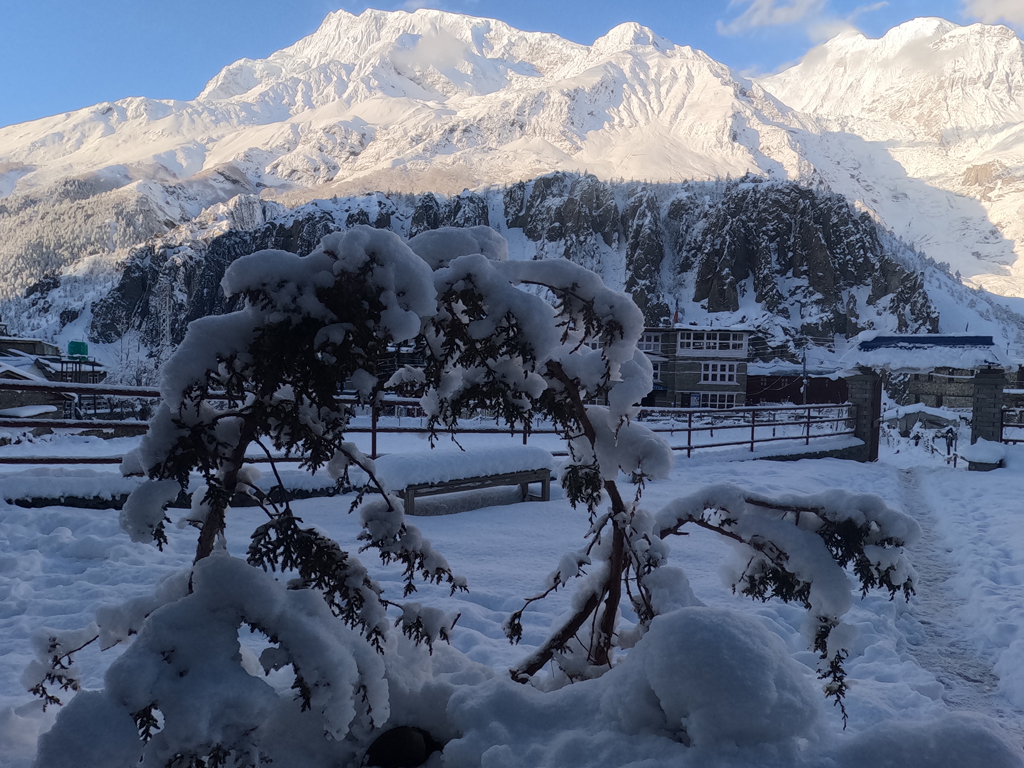
As the Annapurna Circuit trail goes around the Annapurna Range and other high mountains, you will get to enjoy stellar views of Annapurna I, II, III, and IV, Gangapurna, Nilgiri, Tarke Kang, Lamjung Himal, and other giants. Dhaulagiri (the seventh-highest mountain in the world), Manaslu(the eighth-highest mountain in the world), and Annapurna I (the tenth-highest mountain in the world) can be viewed closely from the trail.
Easily Accessible
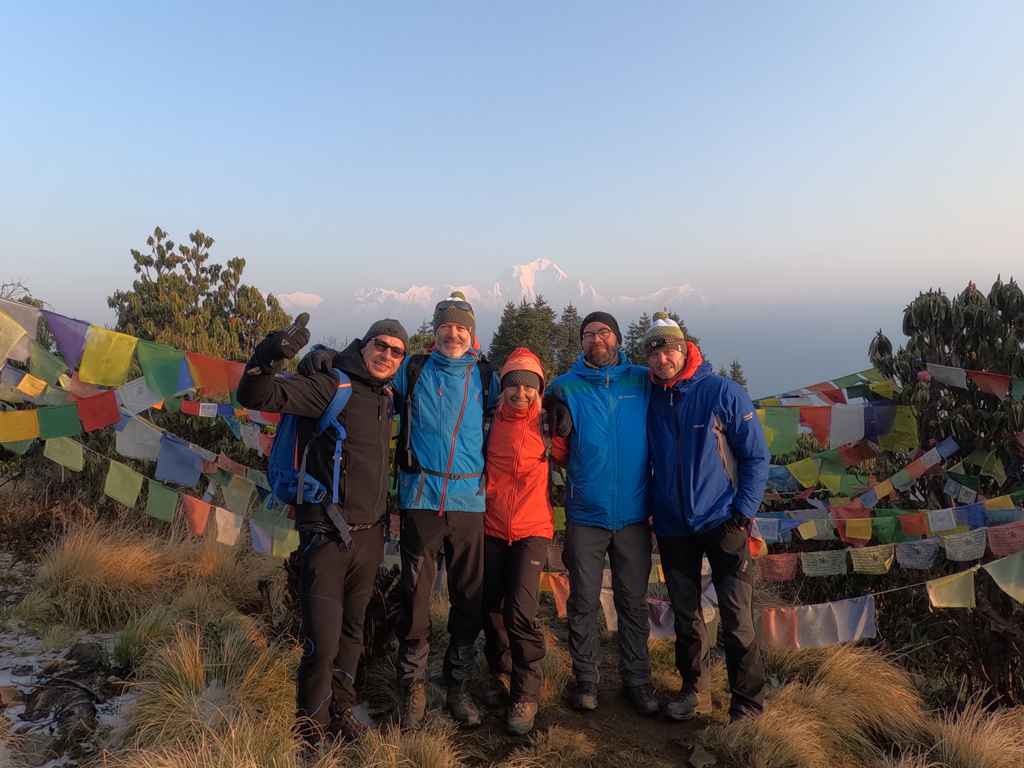
With the dirt roads connecting most villages on the route, there's easy access to the starting and ending points of the Annapurna Circuit. Roads have been built up to Manang and Muktinath, which has made reaching the trailhead easier.
Now, you can start or end your trek at places further away from the original starting and ending points. With vehicular access, it has also become easier to get help in case of an emergency. An airport at Jomsom and Hongde in Manang offers flight connectivity with Pokhara, the only major city close to the trekking route.
Budget Friendly
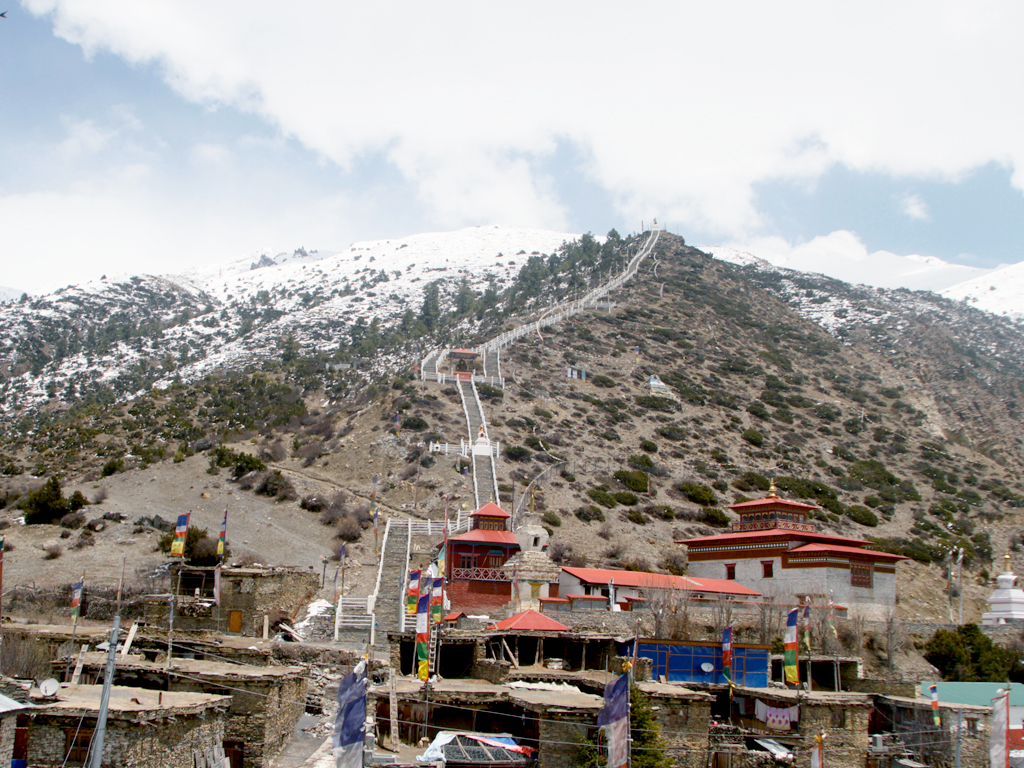
Compared to other popular and challenging high-altitude treks in Nepal, the Annapurna Circuit is budget-friendly and affordable. Prices of food and lodging are cheaper on this side of the Nepal Himalayas. So, if you want a high-altitude adventure but are on a tight budget, consider the Annapurna Circuit a great option.
Flexible
Timing: wise Annapurna Circuit has been made more flexible as a result of the newly built roads. Having access to a motorable road means that you can cut short several days of walking before or after the crossing of the Thorung La Pass. This is a boon for those who want to walk the circuit but are pressed for time.
The roads may have ruined the pure trekking experience to some extent, but it has surely made the journey to Annapurna Circuit more flexible. You can walk the classic route (starting from Besisahar and ending in Nayapul) or walk only a part of the circuit (from Chame or Manang to Muktinath or Jomsom). While the standard or classic route takes around 20 or 21 days to complete, the shorter version of the circuit takes only a week or 12 days to complete.
Comfortable Accommodation
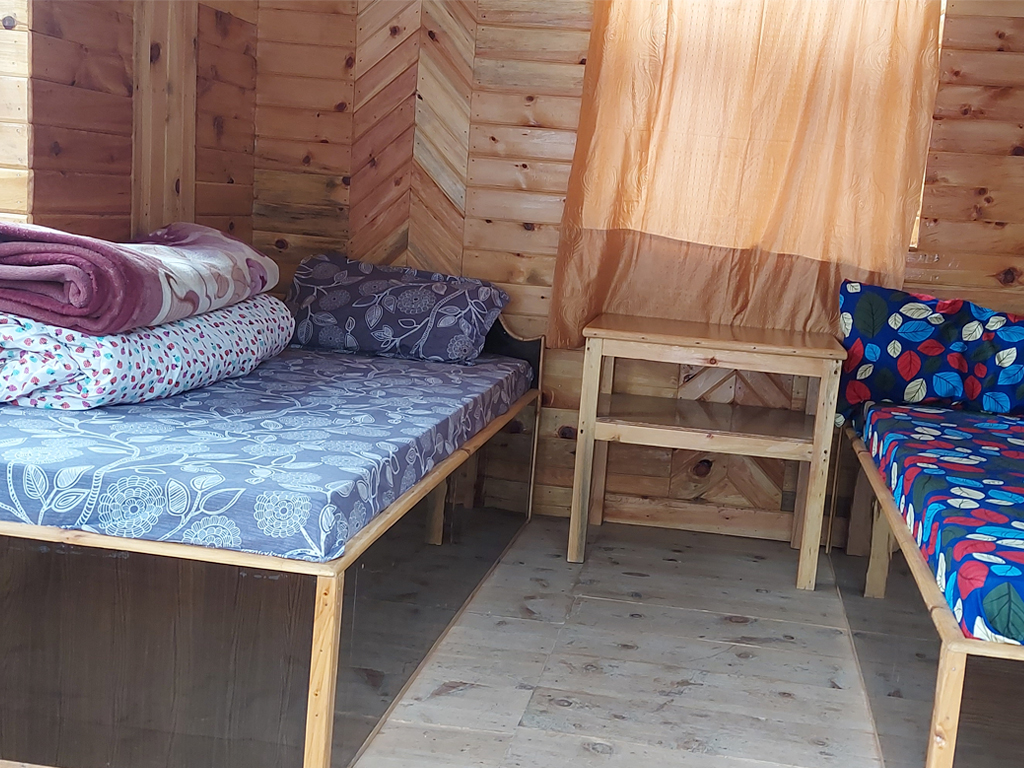
As the Annapurna Circuit has been a major trekking destination for more than fifty years, the route has no dearth of good and comfortable accommodations. Most of the lodges along the route offer modern amenities like western toilets, hot showers, soft beds, wi-fi, and extensive menus with a wide range of Tibetan, Nepalese, Indian, and continental dishes.
Natural Wonders
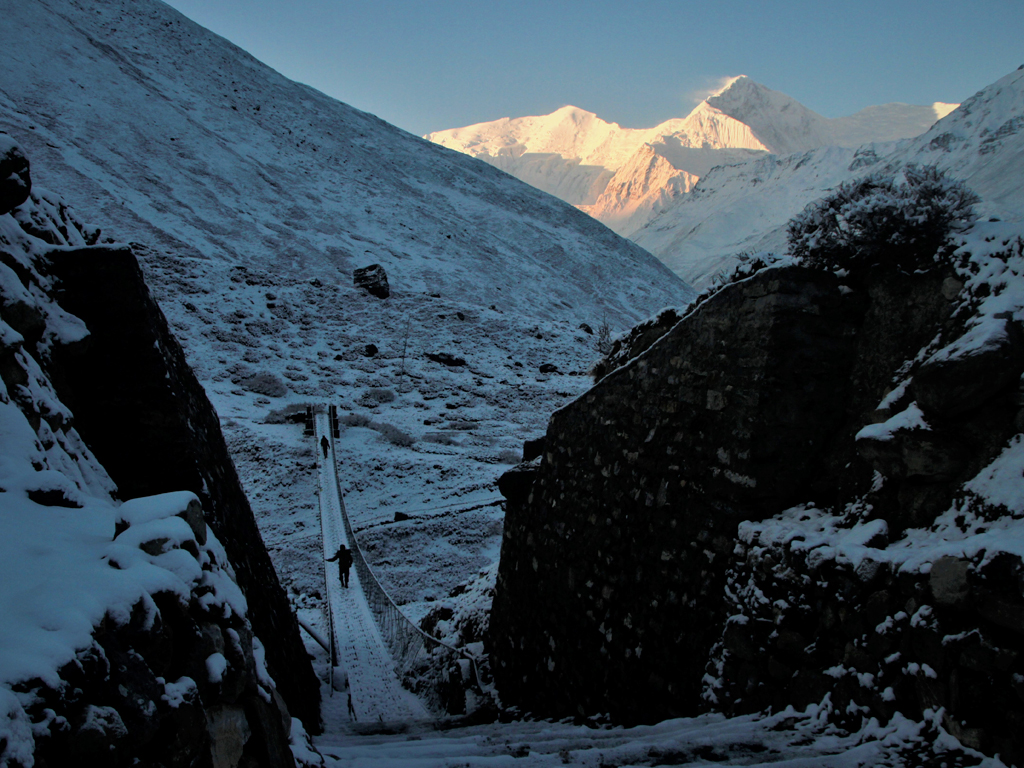
Thorung La, one of the highest walkable mountain passes in the world, is a highlight of the Annapurna Circuit. At 5416m/17,769ft, Thorung La Pass is the highest point of the trek. It takes a challenging hike at a high altitude to reach this pass. From the top of the pass, you can enjoy breathtaking views of the Annapurna Range and Tibetan mountains.
The circuit also touches the Kali Gandaki Gorge, the world's deepest gorge. The Kali Gandaki River contains marine fossils known as ammonites or saligrams, which were created millions of years ago in the Tethys Sea.
The spectacular glacial lakes - Tilicho Lake, Ice Lake, and the Kajin Sara- also fall on the route. Tilicho Lake and Kajin Sara are counted among some of the world's highest lakes. These lakes are fed by melting glaciers from the high mountains. Tatopani, a popular hot spring en route, provides the perfect place to chill and relax after the long trek.
Hindu and Buddhist Spiritualism
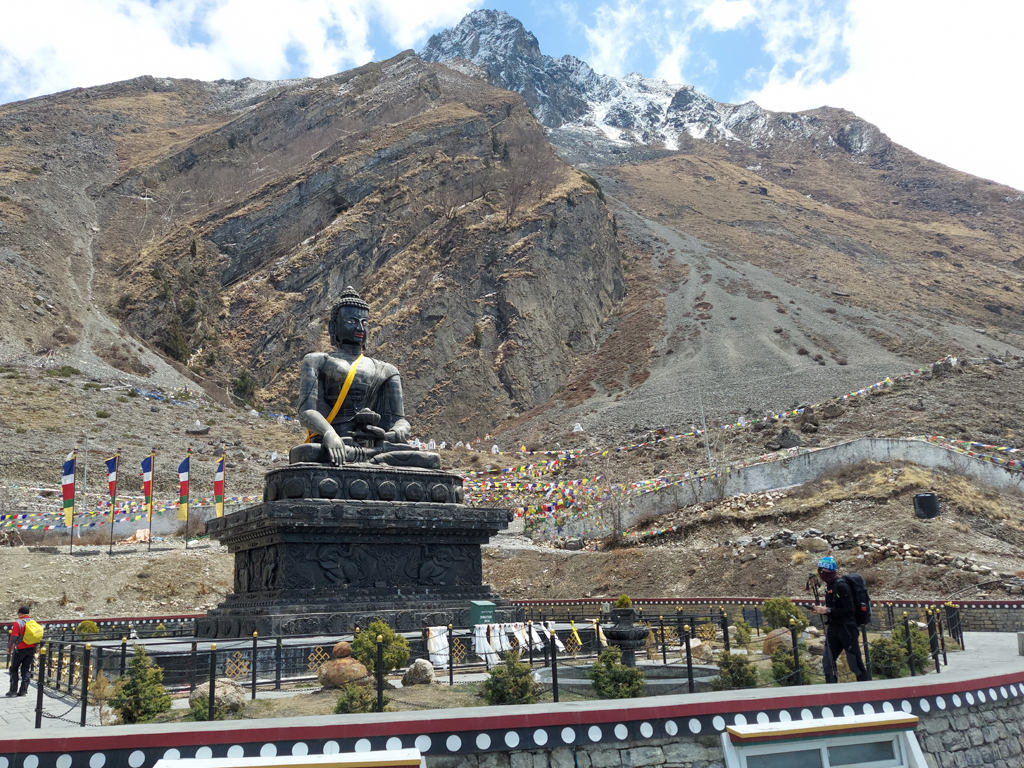
You will come across several sacred Hindu and Buddhist sites during your journey. If you do the circuit in a clockwise direction, the final leg of your trek will bring you to Muktinath, one of the major Hindu pilgrimage sites in the Himalayas. This ancient temple, which lies at the foot of the Thorung La Pass, is dedicated to Lord Vishnu, the preserver of the universe. Hindus believe that visiting this temple and bathing under the 108 water spouts of the temple will free you from past sins and help you attain 'mukti' or salvation.
The temple is also sacred for Buddhists, who consider it the shrine of Avalokiteshwara or Chenrezig. Padmasambhava, or the Second Buddha who introduced Buddhism in Tibet, is said to have meditated at this site while on his way to Tibet. Close to Muktinath Temple is a small Hindu shrine known as Jwala Mai Temple and a Buddhist monastery Samba Gomba.
Tilicho Lake, which lies close to Manang, is a sacred lake for both Hindus and Buddhists. For Hindus, it is the holy Kag Bhusundi Tal, which is mentioned in the Hindu epic of Ramayana. This lake is sacred for the Buddhists as the saint Milarepa is said to have meditated here while journeying through the Himalayas. There are also many ancient caves and Buddhist monasteries at the villages en route.
Unwind at Pokhara, the City of Lakes
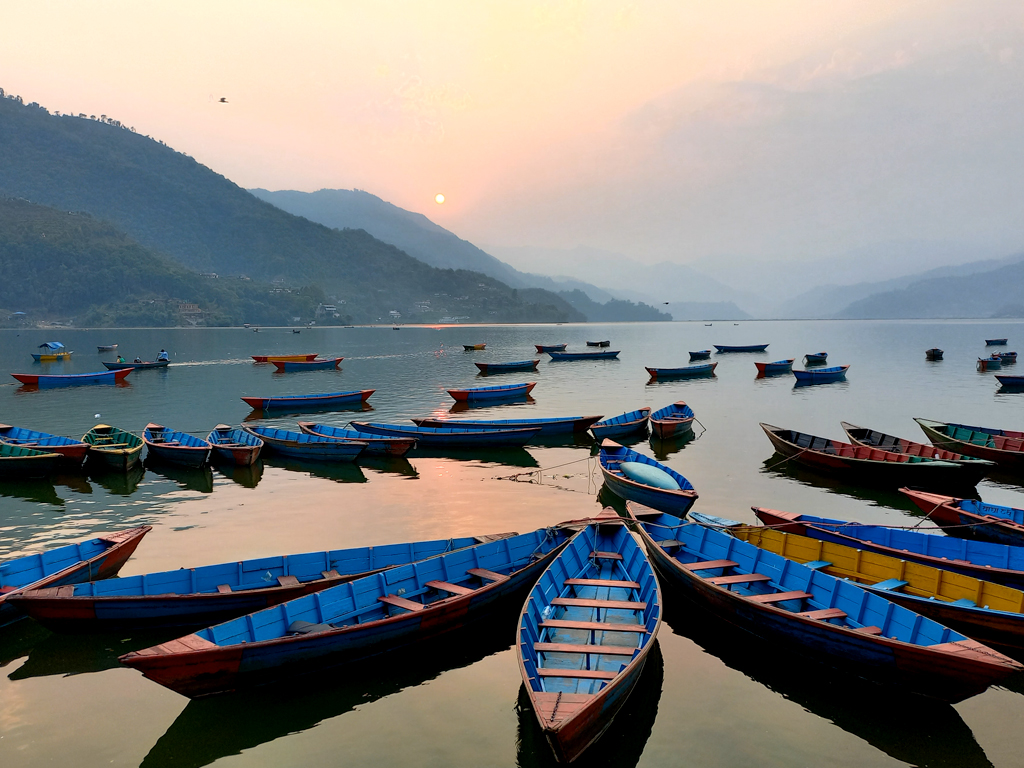
Most trekkers choose Pokhara, a beautiful lakeside city, to start and end their trip. Peaceful and less chaotic than Kathmandu, Pokhara is the perfect place to relax and unwind after a tiring trek. The city lies in a verdant valley surrounded by emerald hills and snow-covered Machapucchre or Fishtail Peak. There are spa resorts and yoga and meditation retreats where you can take some time out to recharge and rejuvenate your tired self.
Pokhara also offers thrilling outdoor activities like bungy jumping, zip lining, paragliding, rafting, hot air ballooning, and sky diving. You can take short day hikes to some of the Chettri and Gurung villages on the outskirts of the city and enjoy a homestay hosted by a local family.
Sounds great, doesn't it? Why don't you go ahead and book your Annapurna Circuit Adventure now?
Not convinced yet? Still, have some doubts? Well, here are some additional points that might make you change your mind.
Perfect High altitude trek for beginners
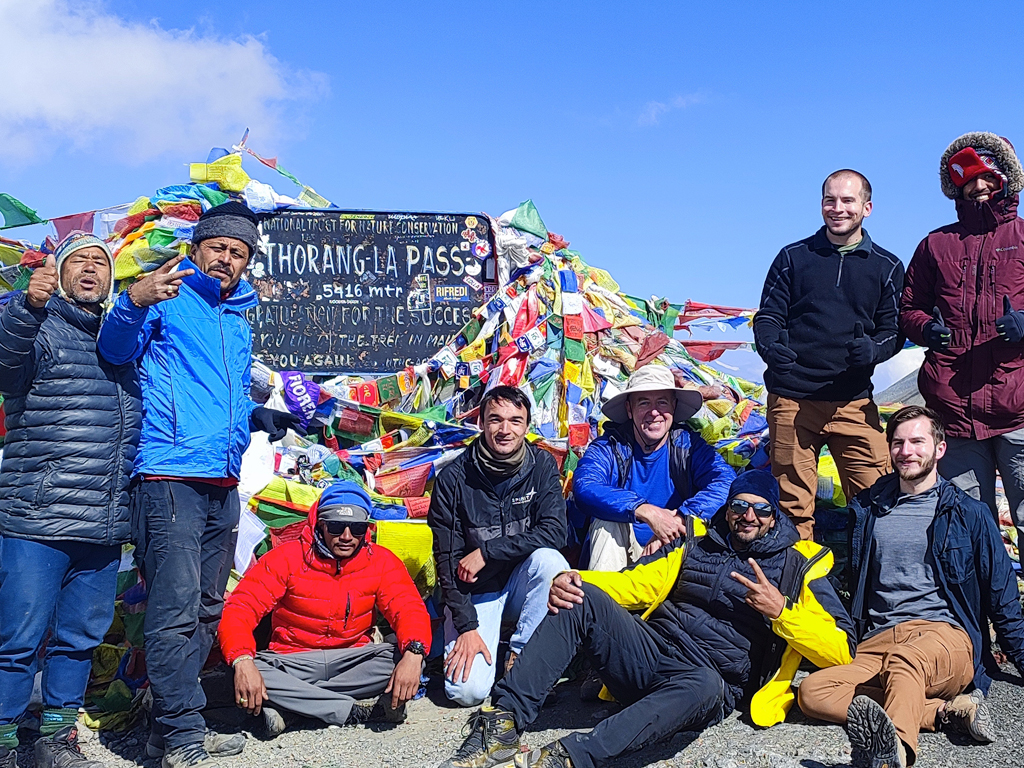
The Annapurna Circuit is a perfect introductory high-altitude trek for new trekkers looking for their first high-altitude walking challenge. The circuit is less challenging and doable than other high-altitude treks like the Everest Base Camp Trek and the Manaslu Circuit. While high altitude is a cause for concern, the Annapurna Circuit trail, in comparison to other high-altitude treks, is well-marked, gentler, and less rugged.
Detours and Trek Extensions
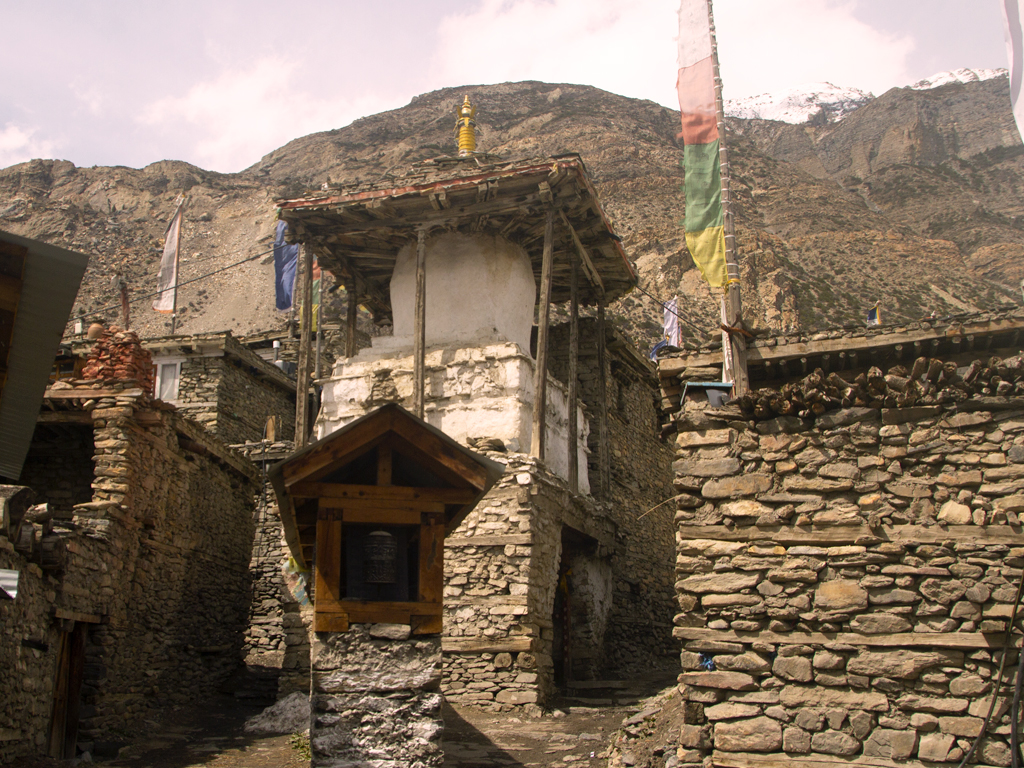
The Annapurna Circuit route is connected with other well-known trekking treks in the region, like the Upper Mustang Trek, Nar Phu Valley Trek, Mardi Himal Trek, Ghorepani Poon Hill Trek, Manaslu Circuit Trek, etc. One can take a detour during the trek or continue on the new route after completing the circuit.
After descending from the Thorung La Pass, you can connect with the Upper Mustang trek route via the old town of Kagbeni. Here you will find an arid desert landscape, strong Tibetan culture and architecture, and the famous sky caves. The trek climaxes at the old kingdom of Lho, an ancient walled city. There are also jeep tours available for Upper Mustang.
The hidden Nar-Phu Valley can be visited before crossing the Thorung La pass. A special permit is needed to enter the valley as it lies close to Tibet. In this isolated corner, you will find nomadic yak herders camping out in traditional tents in the open meadows. The Tibetan influence is very strong as most of the inhabitants are descendants of Tibetan migrants who left Tibet many years ago. Returning from Nar Phu, you head to Manang via the Kang La Pass. You can skip the Thorong La Pass by choosing to walk to Jomsom by crossing the Meso Kanta Pass. Please note the Nar-Phu Valley with Annapurna Circuit Trekking is quite tough and not recommended for beginners.
To access the trails to Ghorepani-Poon Hill, Mardi Himal, and Annapurna Base Camp, you can head down from Jomsom to Tatopani via the Thakkali villages of Marpha, (the apple capital of Nepal), Tukuche, Larjung, Kalopani, and Ghasa.
In the lower part of the Annapurna region, you will get to experience the typical Nepalese hill landscape with the trails winding past terraced fields, rhododendron forests, and hilltop villages of Gurung and Magar communities. Nature is amazing, and there are viewpoints from where you enjoy gorgeous sunrises and sunsets. The Ghorepani Poon Hill trail goes through one of the world's largest rhododendron forests which transforms into a wonderland in the spring season, flooded by pink and red rhododendron blooms.
The route to the Manaslu Circuit can be accessed by completing the Annapurna Circuit in the anti-clockwise direction (by crossing Throng La from Muktinath and reaching Manang). From Manang, you head down to Dharapani, where the Annapurna Circuit route gets connected to the Manaslu Circuit.
Completing both the circuits (Annapurna and Manaslu) will add a feather to your hat and give you bragging rights, as only the tough and hardened trekkers are able to complete this challenge.
Wonderful Wildlife
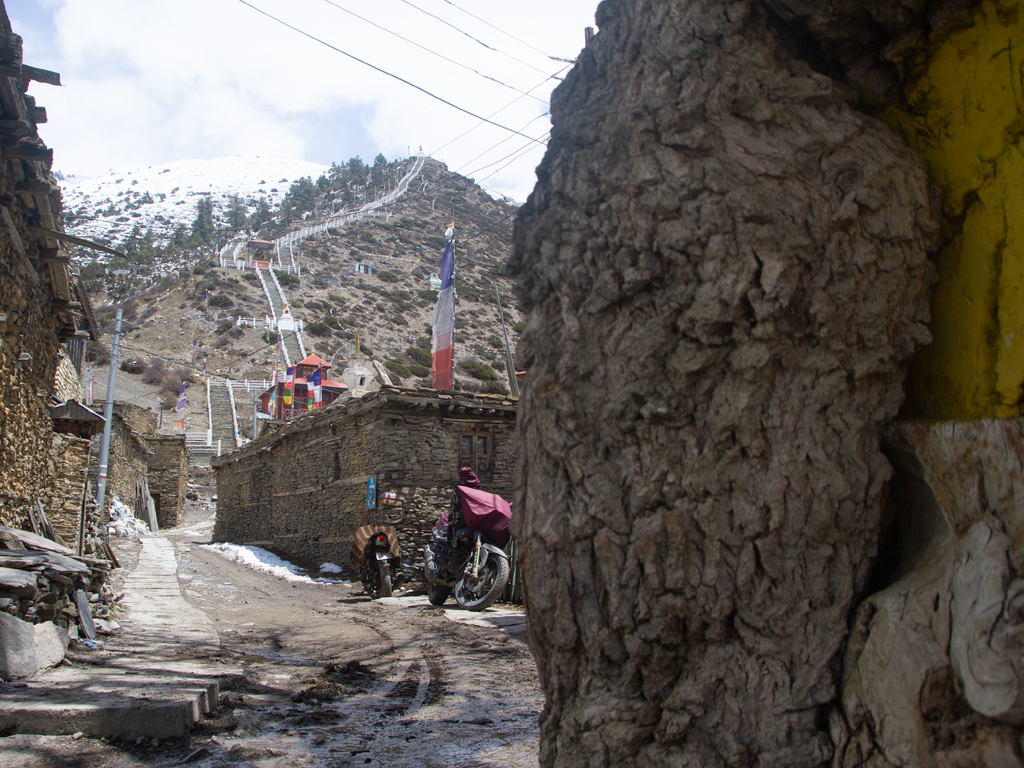
The Annapurna Circuit is located within the Annapurna Conservation Area Project (ACAP), the largest conservation area in Nepal. The circuit meanders past the habitats of the Red Panda, Snow Leopard, Tibetan Antelope, Musk deer, Clouded Leopard, and a host of colorful birds and butterflies. You can encounter herds of yaks grazing in the alpine meadows and alpine goats bounding in the steep cliff sides.
The highlands of Manang are the hunting grounds for Yarsagumba, or Caterpillar Fungus, a Himalayan herb prized for its medicinal properties. The herb is popularly known as Himalayan Viagra and is widely used in Chinese and Tibetan traditional medicines. During May and June, the locals head to the highlands of Upper Mustang (Namke, Khangsar, and Narphu) to harvest this herb.
Vibrant Festivals
Yet another reason to walk along the Annapurna Circuit is to experience some of its unique and vibrant festivals. Some of the interesting festivals celebrated at the mountain villages on the Annapurna Circuit are:
- Yarthung or Horse Racing Festival – Yarthung is celebrated during June/July in Upper Manang. A horse racing competition is held at a ground known as Ta Khill Thang where riders, as well as other people, congregate dressed in traditional finery. After the race people celebrate by dancing and singing. Later they head to the Pocho Gumba and Kargyu Gompa to seek blessings and light butter lamps.
- Metha or Dhachang (Archery Festival) – Celebrated in Chame and other villages of Lower Manang, Metha or Dhachang is a festival where local archers show off their skills and compete for prizes. The festival is held in April/May and lasts for four days. On the last day, a purification ritual is held by the lamas(monks), who perform cham or masked dances to drive out the evil spirits from the village.
- Badhe – Badhe is an ancient festival celebrated every three years by the people of Nyeshang. In this festival, an elaborate play is enacted by the villages in the open field.
- Torkya (Harvest festival) – Torkya is celebrated after the crops are harvested in early November. It is celebrated in the village of Ngawal, where the villagers thank the Buddhist deities and present offerings to the lamas or monks.
- Dawa Dhukpa – During this festival, villagers carry the holy Buddhist manuscripts on their heads and circle the village to the music of drums, cymbals, trumpets, and conch shells played by the monks. Celebrated in June, observing this festival is said to ensure good weather and bountiful harvest.
- Nei Festival – This is a Bon festival celebrated in Ngawal Village. The villagers worship the stones and trees, seeking their blessings. A ritual is held at the Nen Cave, where the cave is worshipped. Locals have been worshipping the Nen Cave for more than five hundred years.
Conclusion
These are some of the best reasons why you should go on the Annapurna Circuit Adventure. If the Annapurna Circuit is on your bucket list, we suggest you just do it. It's a superb trek, and the landscape is as spectacular as it gets in the Himalayas. Compared to other high-altitude treks, aspects like accessibility, safety, costs, and lodging are much better on the Annapurna Circuit.
Check out popular treks on Annapurna Circuit Trail:
- Classic Annapurna Circuit Trekking 18-days
- Annapurna Circuit 14-days
- Annapurna Circuit trek with Tilicho Lake 17 days
- Nar Phu Valley trek with Annapurna Circuit 21 days
- Annapurna Circuit Short Trek 12-days
For trekkers who seek variety, Annapurna Circuit is the perfect choice. The circuit offers a mind blogging mix of landscapes and cultures that’s hard to find in other treks.



